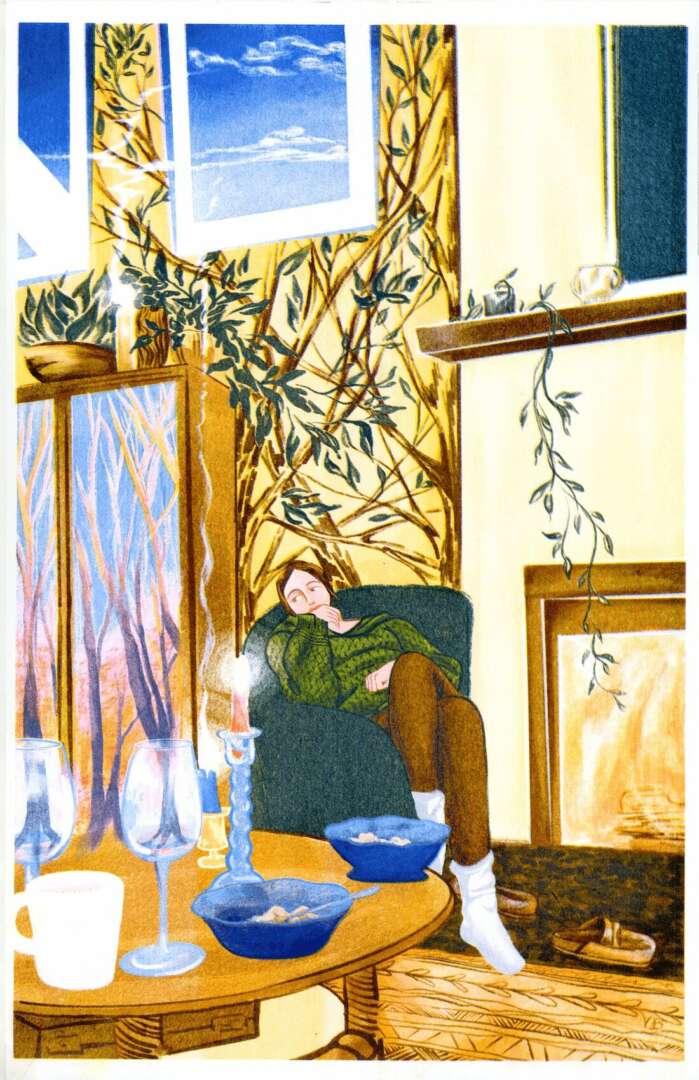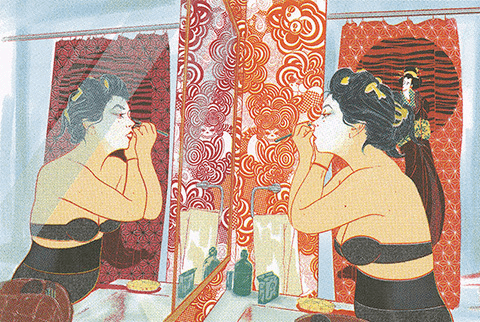We recently connected with Valentina Berdegue and have shared our conversation below.
Hi Valentina, thanks for joining us today. What’s been the most meaningful project you’ve worked on?
The most significant project I’ve undertaken was my thesis, “(Un)Ordinary Women,” during my final year at SVA. Prior to that, my journey was filled with what I can only describe as necessary struggles. In my first three years at university, I explored a multitude of artistic avenues: animation, cartoons, silkscreen, ink, watercolors, acrylics — you name it. Despite my efforts, I struggled to find my footing, often feeling like a failure, especially when compared to my exceptionally talented peers. Feedback from professors and professionals alike was conflicting; some urged me to find a cohesive style, while others encouraged me to embrace multiple styles. I felt lost, and so the only thing to do was to try it all in hopes that I would find my thing.
In my senior year, I entered my thesis class with two certainties: I wanted to work with a medium I had been experimenting with since the previous year: a risograph printer, an old Japanese printer that only prints one color at a time, it has very beautiful one-of-a-kind colors, textures, and misprints and in it’s “rigidity” offers freedom. It’s also a temperamental devil that drove me insane at times. Despite my earlier struggles with this medium, its blend of digital and physical elements, coupled with its restriction to fewer colors, resonated deeply with me. The second certainty is that I wanted my theme to be about the feminine experience. An incredibly large concept that my thesis professor, Marcos Chin, was right to tell me to narrow down. It was here that Professor Chin and years of failure guided me. Marcos rekindled my passion by connecting me with the classic Vogue covers I admired, emphasizing that I didn’t need to conform to any rules of what an illustrator should be or could do. Rather than teaching, he guided and we found my style together.
It was one day, while I was watching my cousin get ready in her bathroom that my thesis idea was formed, not immediately, but through all those years of failure and the illustration that was born from it. I decided to focus on everyday women, celebrating their beauty and exploring their experiences, strengths, and imperfections.
For the first time, I found joy in my creations. While setbacks were still a large part of the process, I had a clear vision and, most importantly I was beginning to develop a style that felt uniquely mine. “(Un)Ordinary Women” marked a turning point; I had discovered my muse and established a confidence in my art that allowed me to proudly identify as an illustrator.


As always, we appreciate you sharing your insights and we’ve got a few more questions for you, but before we get to all of that can you take a minute to introduce yourself and give our readers some of your back background and context?
My name is Valentina Berdegué Saénz, and I’m a Mexican illustrator with a diverse background shaped by my nomadic lifestyle and wide-ranging interests. I find inspiration in travel, culinary arts, cinema, fashion, my cat, and of course, in the beauty of art itself. My primary muse is women, and I often integrate elements of nature in my work—a reflection of my upbringing and the inherent connection between women and the Earth. Beyond aesthetics, my work delves into the psychological and sociological aspects of womanhood, exploring themes that resonate deeply with me.
My journey into illustration was a leap of faith tinged with anxiety. Drawing has been a lifelong passion, I started drawing with my sister, we draw our favorite characters from Winx Club, Teen Titans, Trollz, Panty & Stocking, and other cartoons and it just became something I liked to do, and I did it every day (especially at school). I had a very active imagination and I loved being able to create these characters with personality and style. When I was faced with the question of what to do with my future at 18, I chose to pursue what I loved most. Fortunately, I have had the unwavering support of my family as I navigate this creative path, constantly learning and evolving along the way. Despite grappling with social anxiety, I am paradoxically an ambivert, shaped by a background in a vibrant and social environment, and if I can give a piece of advice: learn how to be social. It’s thanks to networking and interacting with people in the illustration world that I’ve been able to grow so much and be given the opportunities I’ve had.
I thrive on curiosity and experimentation, guided by the motto, “I don’t know what the fuck I’m doing, but I’m gonna do it anyways.” My professional journey has predominantly been in editorial illustration, but I’m open to exploring new challenges and projects and can switch my style to better fit my ideas for the specific project.
My process begins with loose pencil sketches, I then work on them digitally and this is where I decide if a piece is good or bad, usually, it’s the latter but I fully believe that failure is the key to success. Learn from it! If the piece is a success then I risograph print it- I usually have to go back and forth between the Riso and the digital step but it’s well worth it.
What sets my work apart is the vivid colors, the style that only a risograph can give, and its blend of personal introspection with a broader exploration. I take pride in capturing the essence of everyday women, celebrating their stories and strengths through my illustrations. For potential clients, followers, or fans, I want them to know that my art is a reflection of my passion and dedication to portraying women, as well as a continued exploration of myself.


Is there something you think non-creatives will struggle to understand about your journey as a creative?
The artistic world has shown me that life’s journey is anything but linear. There are countless paths you can take, and guess what? You don’t have to stick to just one. Embrace each experience, try everything, live fully, and use what you gain to your advantage.
For example, I worked in galleries and artists’ studios, this taught me to overcome my anxiety and learn to sell both myself and my work. It taught me how to organize, communicate, solve problems, think on my feet and how extremely important networking is. Through a part-time role at my school, I picked up administration and social media skills. All these experiences are now valuable assets in my career.
You don’t need to confine yourself to being just a freelance illustrator. I landed a job at a fantastic creative agency, which immerses me in a world of creativity, networking, and opportunities for my freelance career, all while providing stability and even more new skills. How did this happen? I attended a Society of Illustrators event met my current boss through a chance introduction, and leveraged the diverse skills I had acquired from my past experiences.
Skills you develop in one area can be incredibly versatile and applicable to many others. There isn’t one straight path to success; it comes in many shapes and forms. When there’s a will and a hunger, there’s always a way.


For you, what’s the most rewarding aspect of being a creative?
For me, the most rewarding aspect of being an artist is overcoming the struggles and self-doubt to create something truly meaningful. I am very familiar with feelings of anxiety, self-hate, comparison to talented peers with millions of Instagram followers, imposter syndrome, failure, and the good old-fashioned thought of, “Why didn’t I become a therapist? My parents paid thousands of dollars for me to become an illustrator, and 99% of the time my illustrations are shit.”
But all of this is worth it when you sit before a blank page, like you’ve done a million times, and failed a million times before, and just like all those times, you put your pen to paper and draw. But this time, you actually manage to connect what your brain and heart want to what’s on the page. It could be a sudden strike of genius or it could be you going back to an old illustration with a fresh perspective, whatever it is, you’re in the zone and you realize this could be something, and you continue working on it, chasing it, and you manage not to lose it and suddenly you’ve created something beautiful, somehow different than what you were thinking and yet it’s even more perfect. At that moment, you feel like you’re five years old again, and you go running to show off what you made. That feeling makes it all worth it.
You know you won’t get that feeling again for a long time, but you are willing to put in the work and endure because you know that the next time it happens, it will be even better.
Contact Info:
- Website: https://vberdegue.myportfolio.com
- Instagram: @doodle_cadet
- Linkedin: Valentina Berdegue







